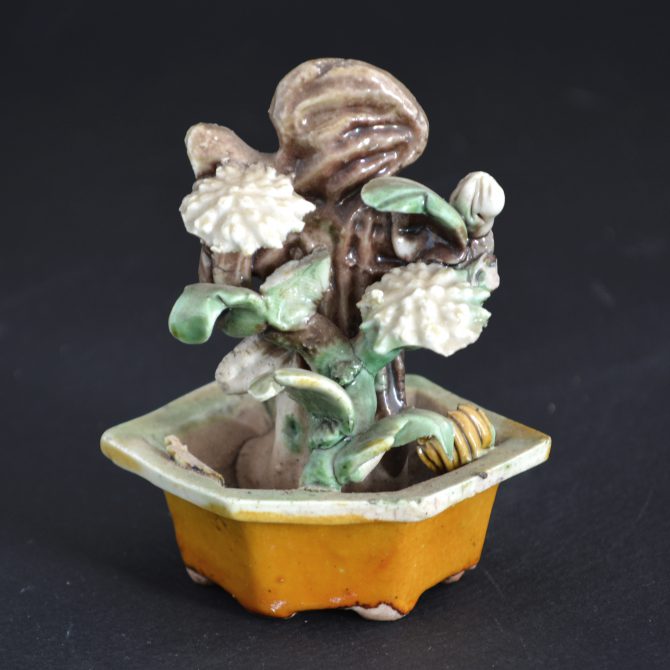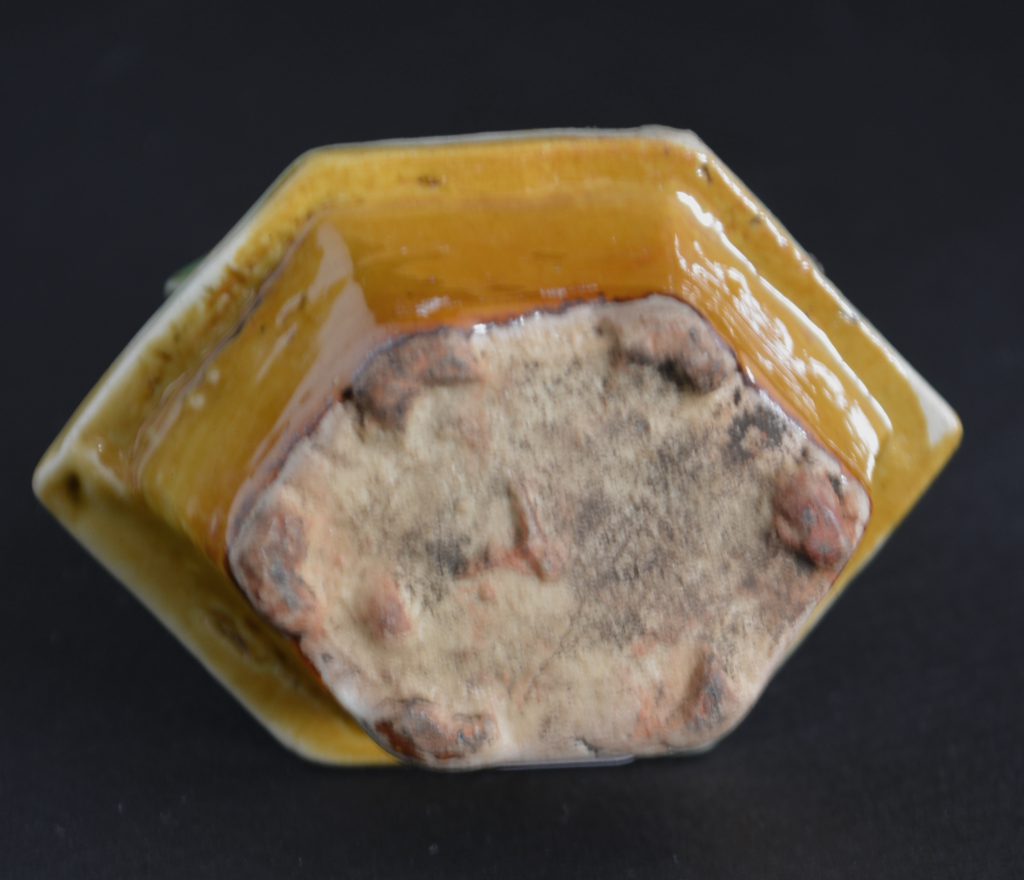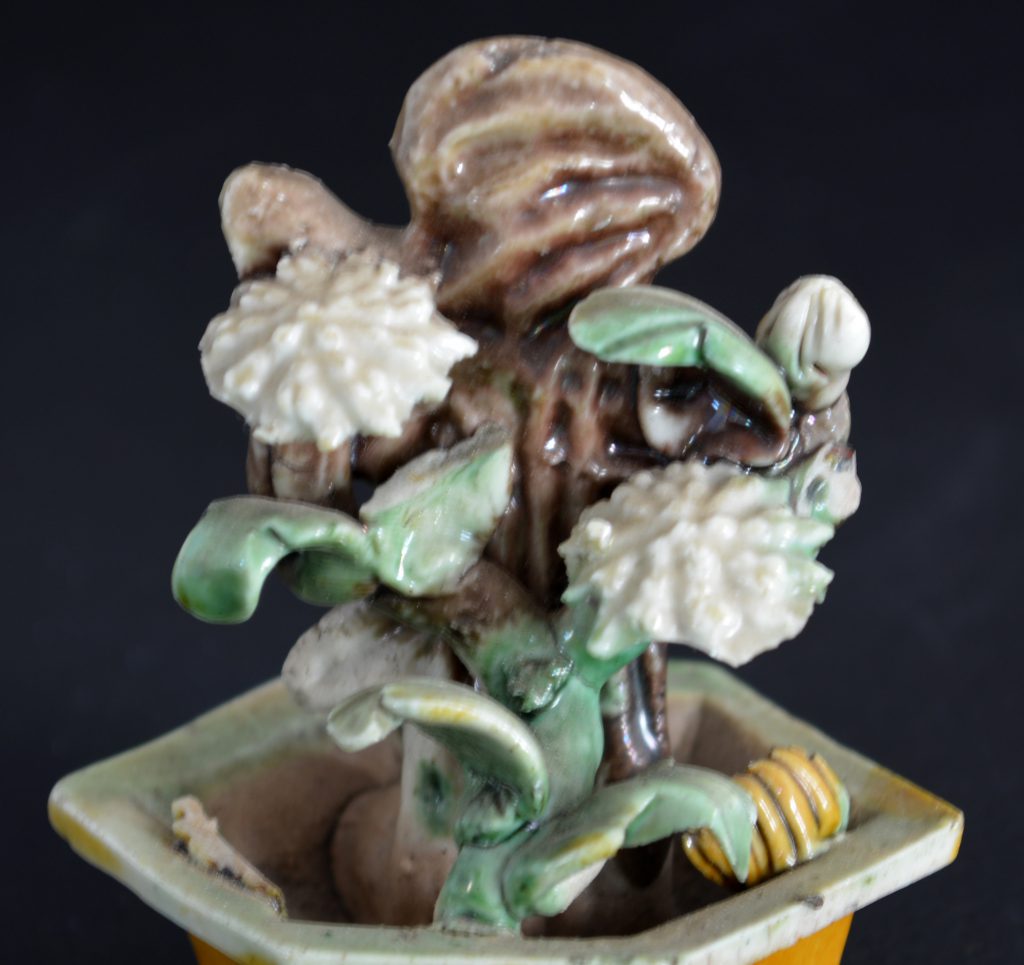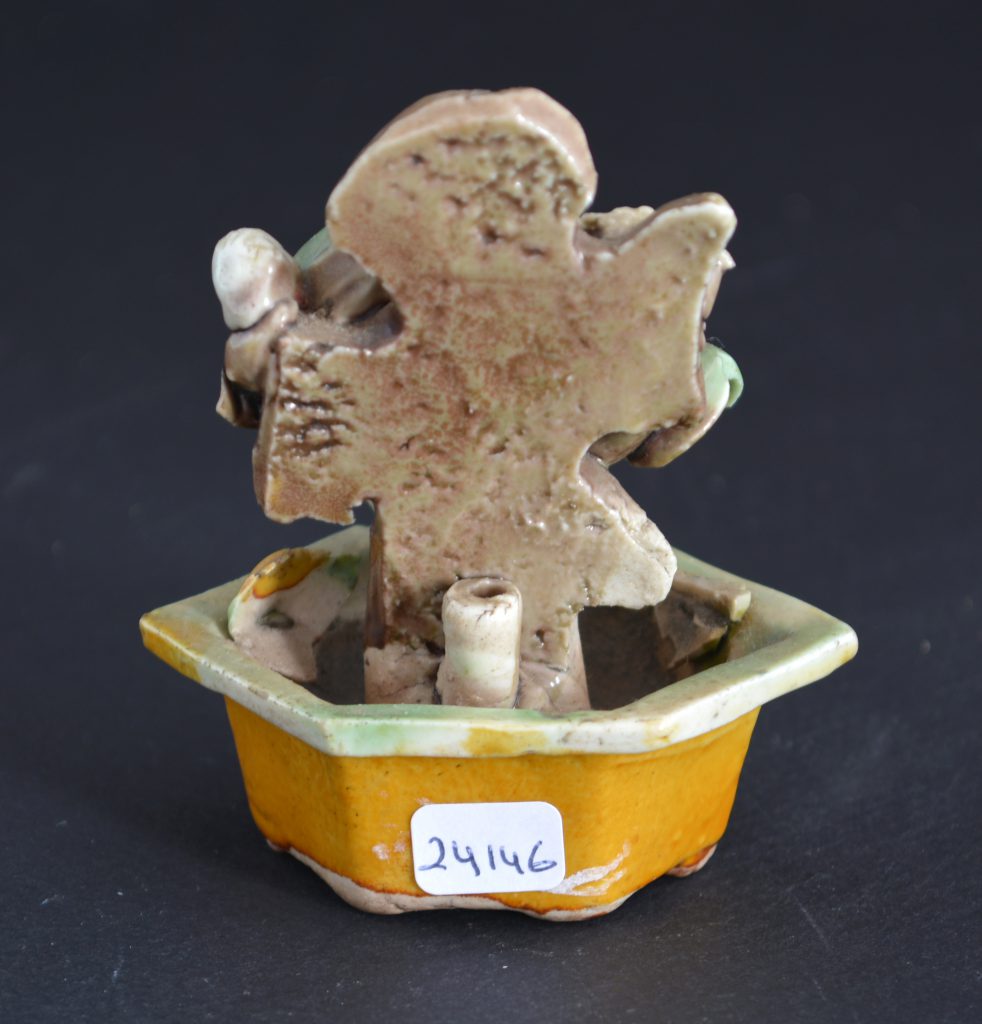
Kangxi Porcelain Famille Verte Model of a Jardinière
A Kangxi Famille Verte Biscuit Porcelain Model of a Jardinière with a Scholars Rock and Flowering Plants.
SOLD
- Condition
- There are some losses ; half of one leaf, a piece from inside the jardiniere and a chip to the edge of one flower.
- Size
- Height : 7.5 cm (3 inches)
- Provenance
- Antiqaire Delpace, Bruxelles, 6th December 1947. Monsieur and Madame Robert de Strycker : The Belgium couple Professor Robert de Stryker and his wife discovered Chinese art during a visit to London in the 1930`s. In 1938 they started to collect, porcelain, cloisonné, prints and lacquer, amassing a large and interesting collection with objects from the Neolithic period to the Qing dynasty. Fortunately the provenance of most of the pieces in the collection have been recorded with details the date of purchase, the name of the gallery or shop they were purchased from as well as the price paid. The De Strykers had a great passion for what they purchased but also an academic approach to their subject. Professor De Stryker exchanged a large number of letters with Harry Garner and Fritz Low-Beer as well as establishing a close relationship with the Curator of the Guimet Museum in Paris. Some pieces in their collection where shown in the exhibition `Oudekunst in Leuvensprivebezit`, this ran from July 18th to October 18th 1964.
- Stock number
- 24146
Information
Chinese Biscuit Decorated Porcelain :
Chinese Biscuit Porcelain was decorated with enamel directly on the unglazed porcelain body and then covering with a clear glaze. Biscuit Porcelain was especially popular from the Transitional period of the middle of the 17th century until the second quarter of the 18th century. Egg and Spinach wares are part of this group, they are inspired by Tang Dynasty Sancai pottery of the 8th century.
Objects For The Scholar`s Desk :
The term `Scholar`s object` refers to something used by a Chinese scholar in his studio, it includes everything from tables, screens and chairs to the smaller objects found on the scholar`s desk. The material used for these desk objects varied greatly, from bamboo to stone, ivory, wood and metal, but ceramics were by far the most commonly used material, even though ceramics rated lowest in ranking of importance. Bamboo, ivory or wood might not be durable enough and metal was sometimes too heavy but ceramic objects could be thrown or moulded in to an infinite variety of forms. Most of the objects made centered around the functions of writing and painting. Brushpots of different sizes and shape were needed to take the various types of brush, the same applies to brushrests. Water droppers for adding water to dry solid ink when it was ground on an inkstones, as well as the inkstones themselves were all needed, as were water-pots and brushwashers, all of these could be made of porcelain. But these were not merely functional items, they conveyed symbolic mean, often enhancing scholarly virtues and the wish for longevity. They were meant to inspire the writer, poet and artist but it is clear they could also exhibit a great sense of humour, sometimes having almost child like quality. Objects for the scholar`s desk were made out of many different ceramic bodies, during the Song Dynasty (960-1279) Qingbai porcelain was most frequently used, often in moulded form but by the late 17th and early 18th century biscuit porcelain with coloured glazes such as green, aubergine or turquoise were popular. It appears highly likely some of these objects were shipped to Europe at the time, especially France and were they were seen as whimsical novelties divorced from their true scholarly function.



